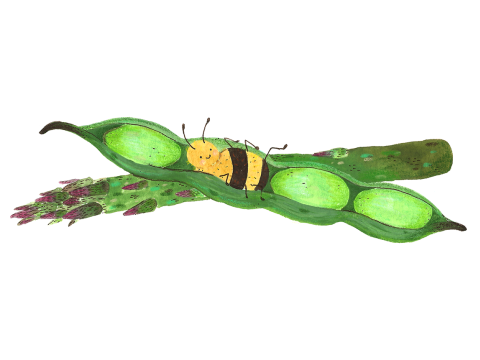The ultimate guide to bees!
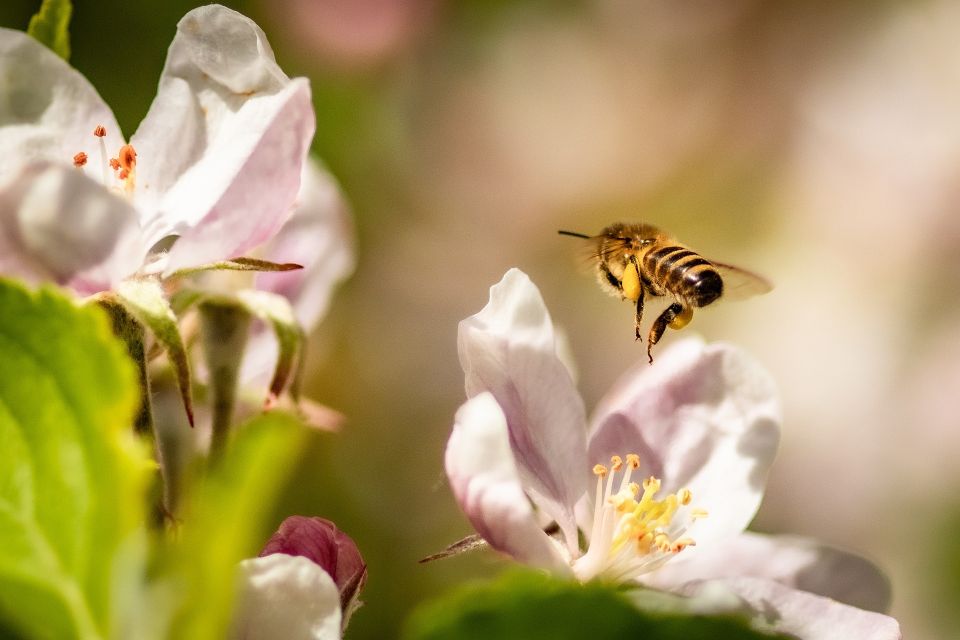
We know we need to look after our bees but how much do we actually know about them? Prepare to bee amazed!
Quick facts
Did you know there are approximately 20,000 bee species in the world? In Britain we have over 200 species of bees.
There are three groups of bees; Honey bees, bumblebees, and solitary bees.
Bees pollinate ⅓ or the world’s food source, without them we wouldn’t be able to grow most of the fruit and vegetables we eat.
You may have heard that our bees need our help. The decline of bee populations is a worldwide problem. Across the UK bees are in decline. Three species of bumblebee are now extinct and the honey bee population is drastically declining.
Bees and pollination
Pollination is the process where pollen is taken from one plant or part of a plant to another in order to reproduce. This occurs naturally with the help of pollinating insects like Bees, butterflies, moths, hoverflies and even beetles. Bees are built to be perfect pollinators, they are attracted to the scent of nectar in flowering plants. The bees will collect nectar and pollen as a food source, taking pollen and nectar from the male parts (anther) of the flower. The pollen often sticks to their hairy bodies as they travel from flower to flower; this is spread to the female (stigma) parts of the flower and this pollinates the plant.
Bees and Trees
At Trees for Cities, we can’t not mention the impact bees have on trees. They share a mutual friendship, so to speak. Many trees are pollinated by bees (and other insects), and in turn trees, plants and flowers provide a critical source of forage for bees! They provide nutrient-rich pollen and nectar that bees use for food and to make honey.
Many trees rely on the wind for pollination but there are some that rely solely on bees for pollination. These include: rowans, hazel, hawthorne, horse chestnuts, and alder, among others. Fruit trees such as apple, pear, cherry and plum are also dependent on pollinators.
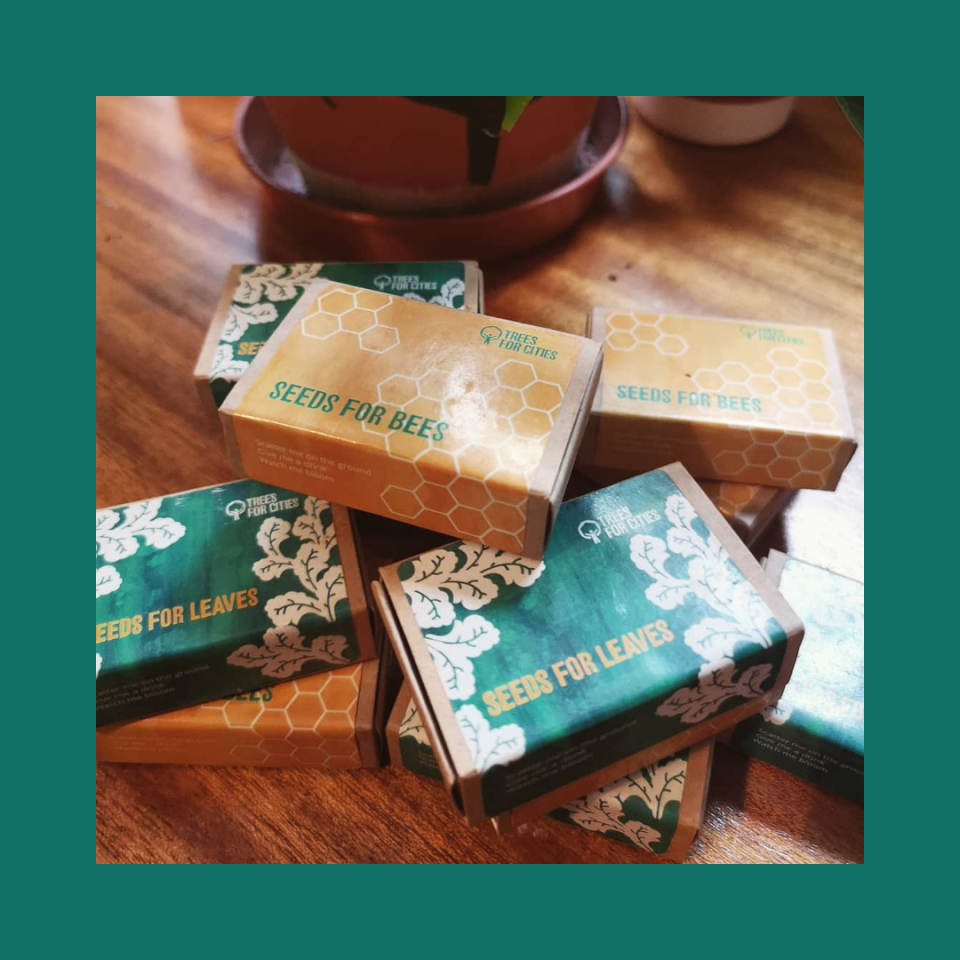
Check out our seeds for bees!
Attract bees to your garden while you grow your lunch with our special seed bombs!
The Honey Bee
- They live in a colony, when they gather together outside their nest it is called a swarm.
- The average sized hive has 20,000 bees inside.
- They do not hibernate but work together to keep the hive warm over winter.
- Bees have been making honey for more than 150 million years.
- The main species in Britain is the European honey bee.
- To make 0.5kg of honey bees need to travel the equivalent distance of 2.2 times around the world or 55,000 miles.
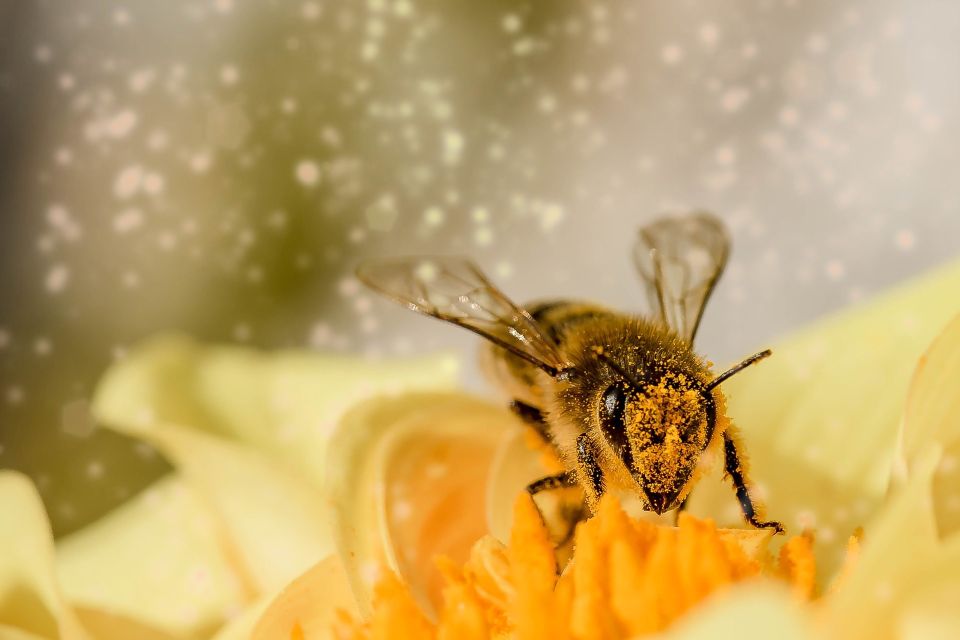
The Bumblebee
- 24 species in the UK
- They are social bees, colonies are smaller than honeybees and depend on species but could be anywhere from 50 to 400 bees in one colony or nest.
- They also have differing tongue lengths, to feed on different flowers.
- Bees comb out the pollen collected in their hairy bodies.
- Bumblebees must be 30°C to be able to fly. Their hairy bodies help them retain temperature.
- Different bumblebee species have varied colours and patterning.
- Red or white tailed bumble bees are easy to spot with their characteristic yellow and black striped and colourful tail ends.
- Tree bumblebees have a clearly defined white tail end and ginger furry back. They like to nest in empty bird boxes.
- Bumblebees can be seen throughout spring, summer and into autumn, but they are not often active in winter as they hibernate, though in recent years with warmer winters people notice more bumblebee activity in the winter.
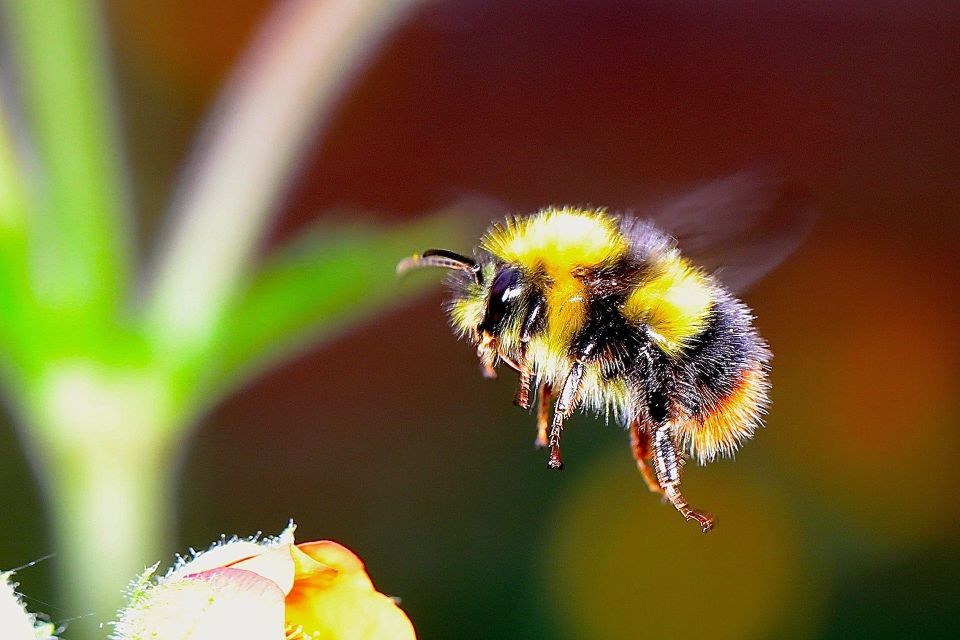
The Solitary Bee
- We have about 240 species of solitary bee in Britain.
- They are the most effective pollinators of bee species. A single red mason bee is equivalent to 120 worker honeybees in the pollination it provides.
- Their appearance varies and some species can be mistaken for wasps.
- About 70% of solitary bees are called mining bees and nest in underground burrows. Bees that nest in houses are called cavity nesting bees.
- Solitary bees do not have pollen baskets for carrying pollen, meaning that each time they visit a flower they lose far more pollen than social bees, which makes them much better pollinators.
- Mining bees like to nest in the ground, you might see a hole in the grass with soil around it, the tawny mining bee and ashy mining bee are common bees to spot on your lawn.
- Mason bees like to nest in gaps in brick walls or hollow stems of plants, the red mason bee is the one you will likely see in urban green spaces.
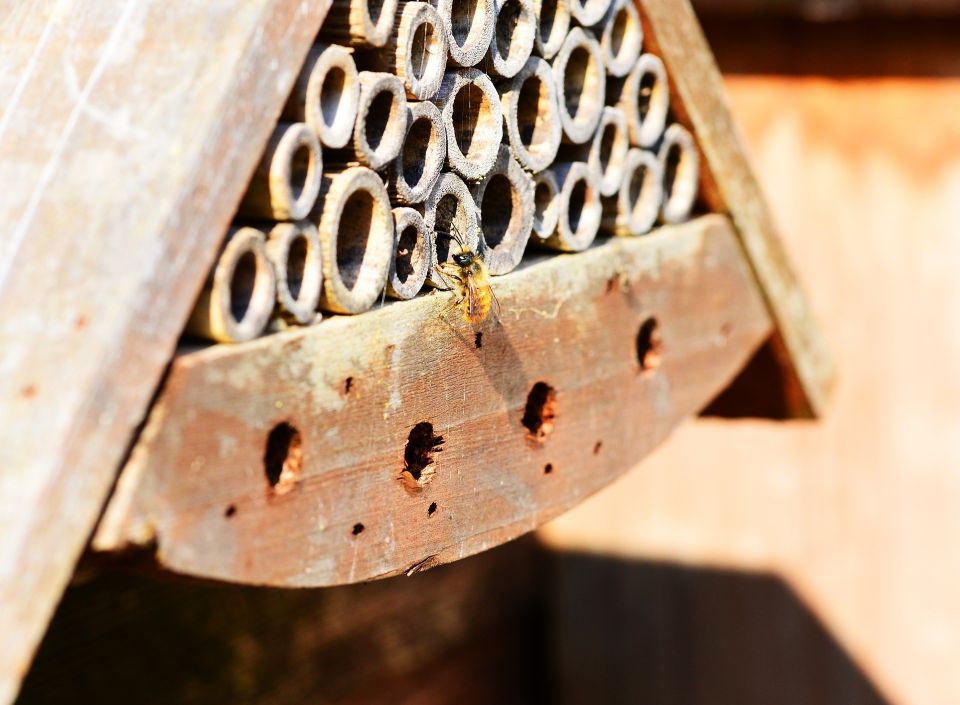
How to look after the bees
Did you know that city terraces, backyards and allotments are vital spaces for bees? New research, published in the journal Nature Ecology and Evolution, found allotments and gardens often had 10 times more bees than parks, cemeteries and urban nature reserves. Our Edible Playgrounds team have put together a list of ways to make your garden more bee-friendly.
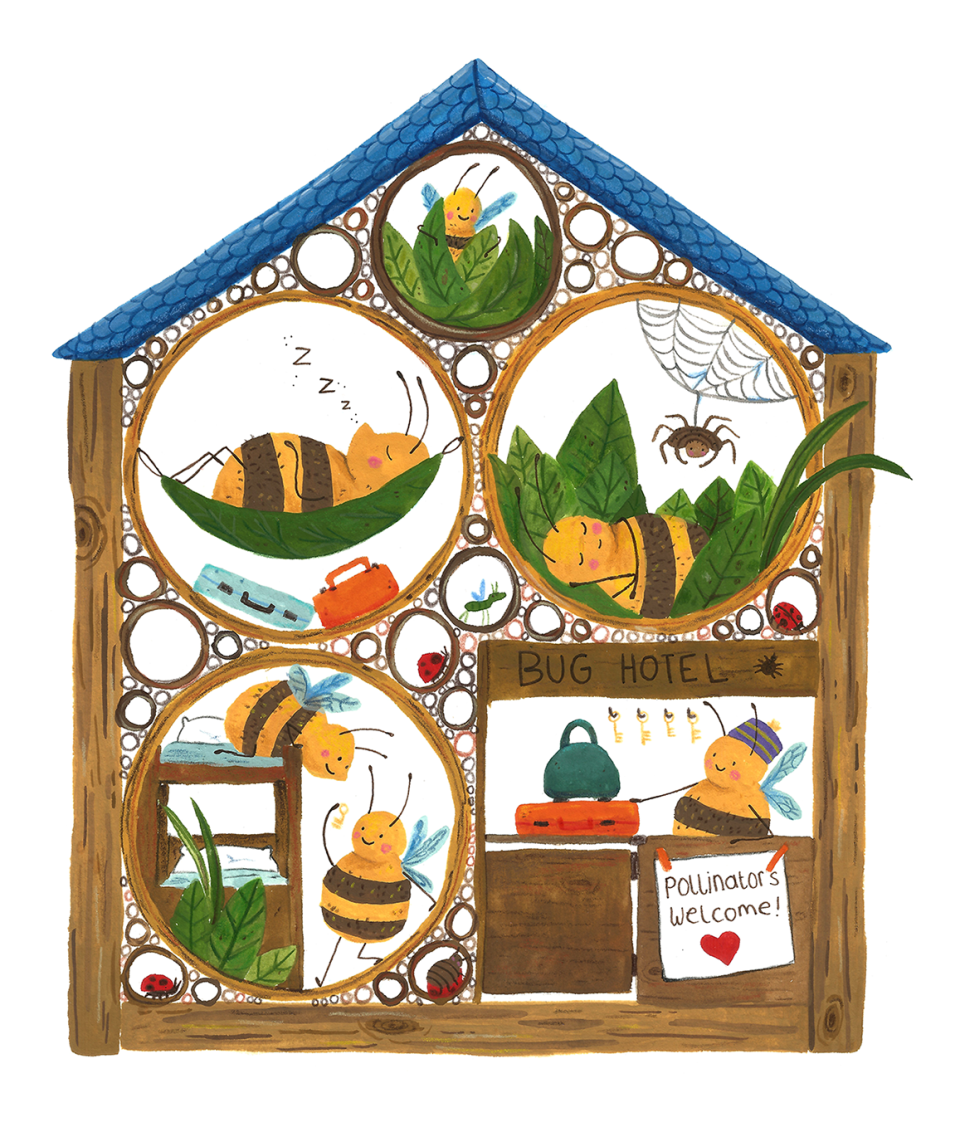
More bee-autiful resources:
How to make an urban garden bee-friendly
Bad news: the bees are struggling. Good news: city-dwellers can help! Even a small garden patch can be a sanctuary for bees, according to a new study. Here are some tips to get you started.
Make your garden bee-friendlyDonate to Trees for Cities and together we can help cities grow into greener, cleaner and healthier places for people to live and work worldwide.
Donate